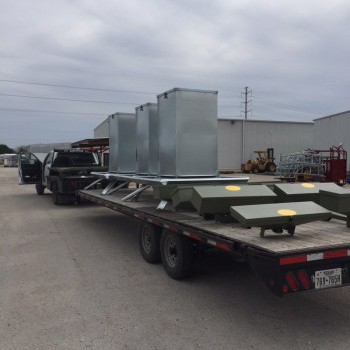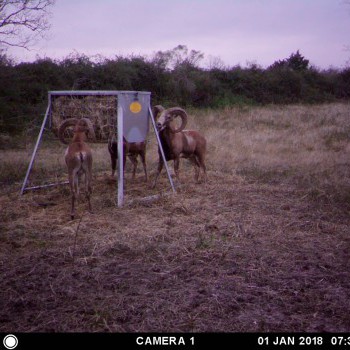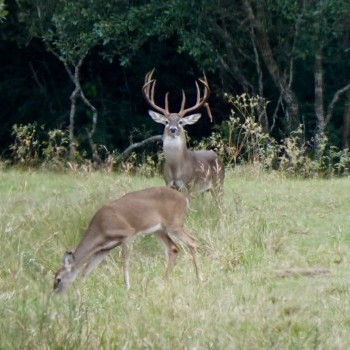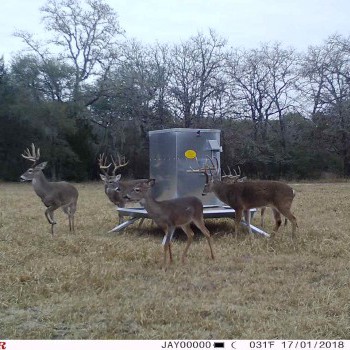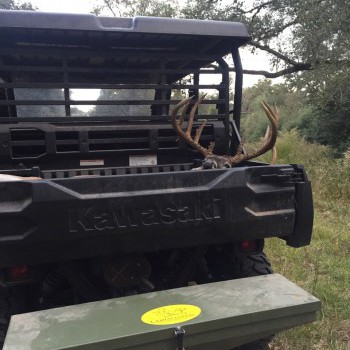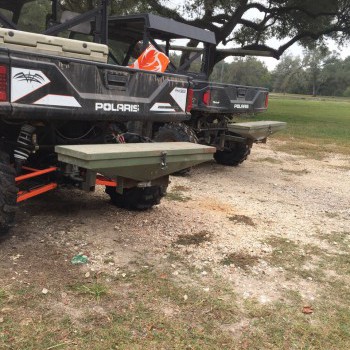Deer of Texas
Original article: https://wildlife.tamu.edu/wildlifemanagement/deer/
By Texas A&M AgriLIfe Extension Wildlife & Fisheries
For many people deer hunting is the highlight of the fall and winter seasons. Texas is home to an estimated 3.6 million white-tailed deer (Odocoileus virginianus), providing ample hunting and wildlife viewing opportunities for residents and non-residents alike. In 2013 roughly 700,000 hunters had a success rate of 58.39%. Mule deer (Odocoileus hemionus) populations are considerably lower, usually fluctuating from 150,000 to 250,000 depending on habitat conditions. They are confined to the western portion of the state, mostly in the Trans- Pecos but with some in the Panhandle and western Edwards Plateau. In 2013 roughly 22,000 mule deer hunters had a 35.88% success rate.
Identification
White-tailed deer and mule deer look very similar, but a few key characteristics will help you distinguish between the two. The average body size of mule deer is usually larger than white-tailed deer; however this is not a great identification tool because you rarely have both species standing next to each other for comparison. White-tailed deer can be recognized by their white bottomed tail used as a warning flag; mule deer tails are a more cream colored with a distinct black tip. The easiest way to identify mule deer, especially antlerless deer, is by the characteristically large ears in proportion to head size, which is where they get their name. White-tailed deer have smaller, seemingly more proportional ears. Mule deer also have characteristic black markings on their forehead and around their ears, as can be seen in the pictures above. On bucks during the breeding season the antlers are also an additional indicator. On mule deer the antlers are usually bifurcated (the tines come in forked pairs). Mule deer racks are generally described in a side x side format, for example 4×4 for a deer with 4 tines on each side. White-tailed deer usually have all their tines coming off one main beam, and antlers are described based on total points, such as 8pt or 9pt. Antlers alone are not a great indicator of species due to variation in individuals. For instance, a 3×3 mule deer rack with a non-bifurcated tine on each side can look very similar to a 6 point white-tailed deer rack. There are also white-tailed deer racks with forked tines that can look very similar to a mule deer rack. There are areas were people have reported mule deer with non-bifurcated racks similar to white-tailed deer or white-tailed deer herds with many bifurcated racks. If in doubt contact a TPWD biologist for identification help.
Habitat requirements
Food Both mule deer and white-tailed deer have diets composed of 4 main food categories: forbs, grasses, browse, and mast.
Forbs: broad-leafed herbaceous plants, a.k.a weeds. Examples include sunflowers, lambs-quarters, and Illinois bundleflower.
Grass: Not a major diet component because deer can’t properly digest mature grasses, only the young shoots are utilized. Some domesticated grasses such as wheat are an exception and can be consumed when mature.
Browse: Woody plants, usually the leaves, twigs, and sometimes bark is eaten. This also includes the succulents such as prickly pear cactus that make up a large part of desert mule deer diets.
Mast: The nuts, fruits, and berries of woody species. A good example is acorns. Usually only seasonally available.
The proportion of the different food categories in the diet varies between species and regions. Forbs are generally preferred but some populations, especially mule deer populations, may have to rely heavily on browse due to habitat conditions.
Water
Water is a critical component of both white-tailed and mule deer habitats. Water use varies by season and habitat conditions. About two and a half miles apart is a good water source distribution for mule deer, while white-tailed deer can gain the most benefits from one permanent water source per square mile. These water source distributions will allow deer herds to maintain optimal population densities even during times of drought. Many livestock water sources will serve well as wildlife watering sources, such as stock ponds or troughs (troughs should be no higher than 24in to allow young deer to drink from them). The Texas A&M AgriLife Extension publication B-6182 “Harvesting Rainwater for Wildlife” has information on designing and building systems to harvest rainwater and make it available to wildlife.
Cover
Mule deer and White-tailed deer are found in amazingly diverse habitats throughout their geographical distributions, from deserts to mountains to forests. This means that there are many types of cover that deer utilize in different areas of the country. Good habitat should have low shrubs/ grasses that will provide cover for fawns, plus larger shrubs for escape and screening cover for both adults and juveniles. Large trees and bushes provide protection from the elements. Not enough cover can lead to predation problems; not enough cover can also be tied to not enough food since many cover species also serve as browse. The flip side of this is that cover that is too dense can restrict movement through the habitat and prevent deer from moving between the important components that make up their habitat. White-tailed deer prefer denser brush canopies of 50 percent or more whereas mule deer prefer more open habitat with less than 40 percent brush cover.
Reproduction
Breeding season varies slightly depending on where in Texas a deer herd is located. Mule deer breeding season starts in mid-November, peaks in mid/late December, and ends mid-February. Peak breeding for white-tailed deer is usually in mid-November through early December. Fawning for both species takes place in the summer, usually June/ July, depending on when the doe was bred. White-tailed deer usually have one fawn their first fawning season and then twins during later years; Mule deer usually have one fawn their second fawning season and twins thereafter.
References
Armstrong, W. E., and E. L. Young. 2000. White-tailed deer management in the Texas Hill Country. Texas Parks and Wildlife Department. http://www.tpwd.state.tx.us/publications/pwdpubs/media/pwd_rp_w7000_0828.pdf Accessed 21 Oct 2014
Cantu, R. and R. Calvin. Mule deer management in Texas. Texas Parks and Wildlife Department. http://www.tpwd.state.tx.us/publications/pwdpubs/media/pwd_bk_w7000_0303.pdf Accessed 21 Oct 2014.
Hall, S. 2005. Texas wildlife identification guide. Texas Parks and Wildlife Department. http://www.tpwd.state.tx.us/publications/pwdpubs/media/pwd_bk_k0700_0517.pdf Accessed 21 Oct 2014
Lightfoot, S. 2013. Outlook favorable for Texas deer season. Texas Parks and Wildlife Department. http://www.tpwd.state.tx.us/newsmedia/releases/?req=20130926b Accessed 21 Oct 2014
Purvis, J. 2014. Big game harvest survey results 2000-01 thru 2013-14. Texas Parks and Wildlife Department. http://www.tpwd.state.tx.us/publications/pwdpubs/media/pwd_rp_w7000_0718b.pdf Accessed 21 Oct 2014
Richardson, C., J. Lionberger, and G. Miller. 2008. White-tailed deer management in the Rolling Plains of Texas. Texas Parks and Wildlife Department. http://www.tpwd.state.tx.us/publications/pwdpubs/media/pwd_bk_w7000_1663.pdf Accessed 21 Oct 2014
For hunting regulations visit: http://www.tpwd.state.tx.us/regulations/outdoor-annual/

